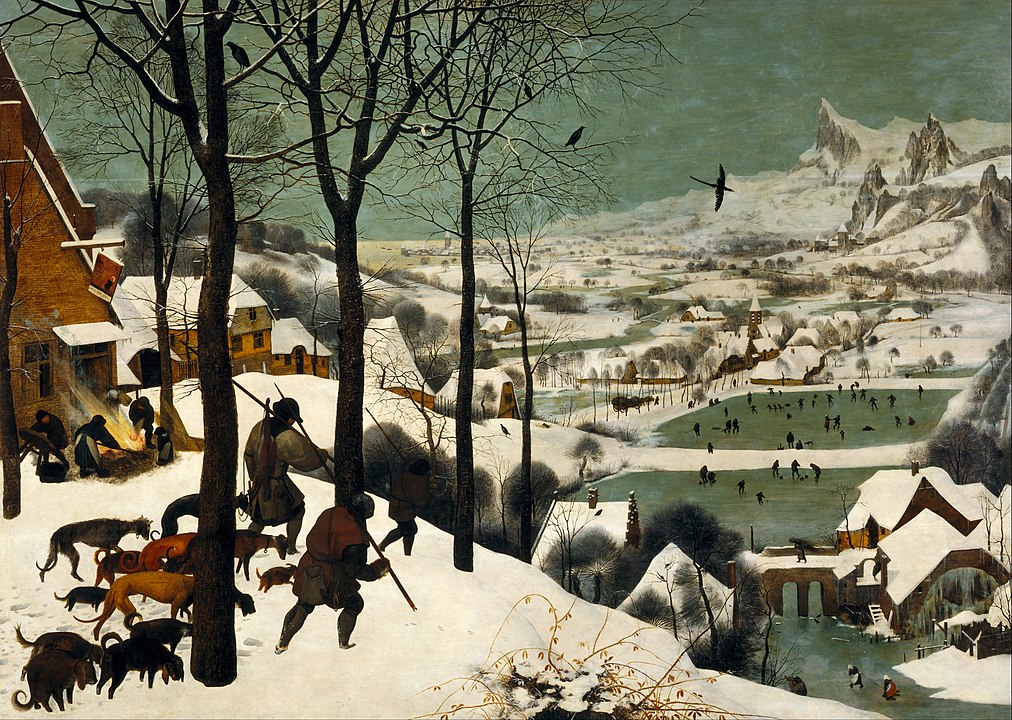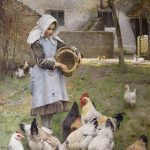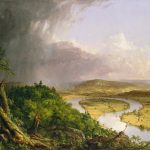
The Northern Renaissance was a period of remarkable artistic, intellectual, and cultural development in Northern Europe from the late 14th to the early 17th centuries. While it was influenced by the Italian Renaissance, it developed distinct characteristics shaped by its geography, traditions, and sociopolitical landscape.
Unlike the Italian Renaissance, which was deeply rooted in classical antiquity and humanist ideals, the Northern Renaissance was more focused on meticulous detail, religious themes, and an emerging appreciation for realism in everyday life. Artists in the north perfected oil painting techniques, allowing for rich textures and intricate details that were not as prevalent in the fresco-dominated south. Printmaking also flourished, helping to spread Renaissance ideas far beyond elite circles.
The movement was driven by a combination of factors: the rise of powerful urban centers in the Low Countries and Germany, the patronage of wealthy merchants and monarchs, and the transformative impact of the printing press. Humanism took on a more religious character, influencing figures like Erasmus and Martin Luther, whose ideas reshaped the cultural and spiritual fabric of Europe.
So, let’s explore the origins, defining characteristics, major artists, patronage systems, humanist influences, and lasting legacy of the Northern Renaissance, providing a comprehensive look at one of the most important cultural movements in European history.
Historical Context and Origins
The Northern Renaissance emerged in the wake of significant political and economic shifts in Northern Europe. Unlike Italy, where city-states like Florence and Venice dominated, the north was characterized by a patchwork of kingdoms, duchies, and free cities, each contributing to the movement’s growth.
Late Medieval Influences
The roots of the Northern Renaissance can be traced to the late medieval period, particularly in the illuminated manuscripts produced by monasteries. The International Gothic style, popular in the 14th century, featured intricate detail, vibrant colors, and religious themes, all of which carried into the Renaissance. The Book of Hours, created by the Limbourg Brothers for the Duke of Berry, is a prime example of this transitional art form.
The Burgundian Netherlands: A Cultural Hub
One of the most important power centers was the Burgundian Netherlands, which included modern-day Belgium, the Netherlands, and parts of France. The Burgundian court was one of Europe’s wealthiest and most sophisticated, attracting artists, musicians, and scholars. Under the rule of Philip the Good and Charles the Bold, the region became a hub for artistic innovation.
War, Commerce, and Urban Growth
The Hundred Years’ War (1337–1453) between England and France devastated parts of the continent, but it also led to economic and social restructuring. As the war ended, trade flourished, particularly in cities like Bruges, Ghent, and Antwerp, which became centers of commerce and banking. Wealthy merchant families, such as the Medicis in Italy, commissioned works of art, fueling a new class of patrons beyond the traditional aristocracy and clergy.
Rise of Individual Patronage
Unlike in Italy, where the church and noble families were the dominant patrons, Northern European artists often worked for urban elites, guilds, and civic institutions. The focus on guild-based art production meant that workshops played a crucial role in artistic training, ensuring the transmission of skills and techniques across generations.
By the late 15th century, the Northern Renaissance was fully underway, distinguished by its devotion to detail, use of oil paints, and increasing focus on secular as well as religious themes.
Key Characteristics of Northern Renaissance Art
Northern Renaissance art developed a unique visual language that set it apart from its Italian counterpart. It was characterized by realism, symbolism, technical mastery, and an emphasis on everyday life.
1. Detail and Naturalism
One of the defining features of Northern Renaissance art was its unparalleled attention to detail. This was made possible by the widespread use of oil paints, pioneered by Jan van Eyck. Unlike tempera, oil paints allowed for smoother blending and greater luminosity. Artists could build up layers of transparent glazes, creating depth and texture unseen in earlier works.
Portraits, religious scenes, and interiors were rendered with an obsessive level of precision, down to individual hairs, fabric textures, and reflections in glass. This realism extended to facial expressions and emotions, making figures appear lifelike and psychologically complex.
2. Symbolism and Allegory
Northern artists often embedded hidden meanings in their works. Objects in paintings were not just decorative but symbolic, carrying deeper religious or moral significance. In Jan van Eyck’s Arnolfini Portrait, the small dog symbolizes fidelity, the fruit represents fertility, and the chandelier’s single candle alludes to divine presence.
Religious works often included ordinary settings and objects filled with sacred meaning. This was a reflection of the North’s deeply spiritual culture, where everyday life and faith were intertwined.
3. Portraiture and Individualism
The Northern Renaissance saw a surge in portrait commissions, reflecting the growing status of merchants, scholars, and rulers. Unlike medieval depictions, which were more generalized, these portraits were highly individualized, capturing subtle expressions and psychological depth.
Artists like Hans Holbein the Younger mastered the art of capturing personality, as seen in his portraits of Henry VIII and Thomas More. These works showcased not only physical likeness but also social standing, intelligence, and inner character.
4. Landscape and Everyday Life
A major innovation was the emergence of landscape painting and scenes of daily life. This trend became particularly prominent in the works of Pieter Bruegel the Elder, who depicted peasant life, festivals, and rural landscapes with remarkable authenticity. Unlike the grandeur of Italian Renaissance art, Northern artists celebrated the ordinary, making art more relatable and accessible to a wider audience.
The combination of these characteristics made Northern Renaissance art one of the most visually compelling and intellectually rich movements in history.
Major Artists and Their Contributions
The Northern Renaissance produced some of the most technically skilled and innovative artists in European history. Their mastery of oil painting, printmaking, and portraiture set new standards for realism and storytelling in art. Below are some of the most influential figures of the period.
1. Jan van Eyck (c. 1390–1441): The Master of Oil Painting
Jan van Eyck is often credited with revolutionizing oil painting, although he did not invent the medium. His ability to layer translucent glazes created an unprecedented sense of depth, light, and realism. His most famous work, The Arnolfini Portrait (1434), is a masterpiece of detail and symbolism. From the reflection in the convex mirror to the intricate textures of clothing, his meticulous attention to realism was groundbreaking.
Other notable works:
- Ghent Altarpiece (1432) – A massive polyptych filled with divine symbolism and radiant color.
- Man in a Red Turban (1433) – Possibly a self-portrait, showcasing his skill in capturing expression and texture.
2. Rogier van der Weyden (c. 1400–1464): Master of Emotion
Unlike Van Eyck, who was focused on meticulous detail, Rogier van der Weyden prioritized emotional intensity. His religious paintings, particularly The Descent from the Cross (c. 1435), are known for their expressive sorrow and fluid composition. His figures display raw human emotion, a quality that deeply influenced later artists.
Other notable works:
- Portrait of a Lady (1460) – A striking example of Northern portraiture, blending elegance with psychological depth.
- The Last Judgment (1446–1452) – A large altarpiece with dynamic, dramatic movement.
3. Hieronymus Bosch (c. 1450–1516): The Visionary
Bosch was an anomaly among his peers. His works are filled with bizarre, dreamlike imagery, often depicting sin, morality, and the supernatural. His most famous piece, The Garden of Earthly Delights (c. 1490–1510), is a surreal triptych portraying paradise, earthly excess, and hell in vivid, grotesque detail.
Other notable works:
- The Haywain Triptych (c. 1516) – A critique of human greed and folly.
- The Last Judgment (c. 1500) – A dark vision of divine punishment.
4. Albrecht Dürer (1471–1528): The German Leonardo
Dürer was a painter, printmaker, and theorist who bridged the Northern and Italian Renaissance. His self-portraits showcase an almost modern sense of identity, and his mastery of engraving set the standard for printmaking. His woodcuts and engravings, such as Melencolia I (1514), are filled with mathematical precision and intellectual depth.
Other notable works:
- Self-Portrait (1500) – Depicts himself in a Christ-like pose, emphasizing his artistic genius.
- The Four Horsemen of the Apocalypse (1498) – A dramatic, high-detail engraving.
5. Hans Holbein the Younger (c. 1497–1543): The Court Painter
Holbein is best known for his portraits of the English aristocracy, particularly his work for Henry VIII. His portraits are striking for their clarity, realism, and attention to material wealth. The Ambassadors (1533) is a masterpiece of illusion and symbolism, featuring a famous anamorphic skull as a memento mori.
Other notable works:
- Portrait of Henry VIII (1537) – One of the most famous images of the Tudor king.
- Portrait of Thomas More (1527) – A highly detailed, dignified portrait of the scholar.
6. Pieter Bruegel the Elder (c. 1525–1569): Painter of Peasant Life
Bruegel was a master of landscapes and depictions of everyday life. Unlike his predecessors, who focused on religious and aristocratic subjects, he painted scenes of common people, often using them as allegories for human nature. His most famous work, The Hunters in the Snow (1565), captures a winter landscape with stunning realism.
Other notable works:
- The Peasant Wedding (1567) – A lively, detailed depiction of rural festivities.
- The Tower of Babel (1563) – A metaphorical take on human ambition and failure.
These artists shaped the Northern Renaissance, each contributing distinct techniques and themes that influenced later European art.
The Role of Patronage and the Printing Press
The Northern Renaissance flourished due to strong patronage from monarchs, merchants, and religious institutions, as well as the revolutionary impact of the printing press.
1. The Burgundian Court: A Renaissance Powerhouse
The Dukes of Burgundy, particularly Philip the Good (r. 1419–1467), were major patrons of the arts. Their court in Bruges and Ghent attracted leading painters, sculptors, and manuscript illuminators. The lavish Burgundian taste influenced other courts across Europe.
2. The Rise of Merchant Patronage
In addition to aristocrats, wealthy bankers and merchants in cities like Antwerp and Bruges commissioned works of art. Unlike in Italy, where churches and noble families dominated, guilds and private collectors played a larger role in the north. This led to an increase in secular and personal art, including portraits and depictions of daily life.
3. The Printing Press: A Revolution in Knowledge
Johannes Gutenberg’s printing press (c. 1440) transformed the spread of art and ideas. It had several key effects:
- Increased Literacy: Books became cheaper and more widely available.
- Spread of Humanism: Thinkers like Erasmus reached a broader audience.
- Rise of Printmaking: Artists such as Dürer used engravings and woodcuts to mass-produce artworks.
This innovation democratized art and knowledge, allowing Renaissance ideas to reach a far wider audience than ever before.
Connection to Humanism and the Reformation
1. Northern Humanism: A Moral and Religious Focus
Unlike Italian humanism, which emphasized classical antiquity, Northern humanism was more concerned with moral and religious reform. Thinkers like Erasmus called for a return to Christian values, emphasizing education and personal piety. His work In Praise of Folly (1509) critiqued corruption in the church, influencing later reformers.
2. The Protestant Reformation and Art
The Reformation, led by Martin Luther (1517), had a profound impact on Northern art:
- Iconoclasm: Many Protestant regions rejected religious imagery, leading to the destruction of church artworks.
- Shift to Secular Themes: With fewer religious commissions, artists turned to portraits, landscapes, and genre scenes.
- Catholic Counter-Reformation: In response, Catholic regions continued producing elaborate religious art to inspire devotion.
This division reshaped European artistic production, leading to the Baroque period’s distinct Catholic and Protestant artistic styles.
Legacy and Influence on Later Art
The Northern Renaissance left a lasting impact:
- Inspired the Dutch Golden Age (17th century): Artists like Rembrandt and Vermeer continued the tradition of realism and genre painting.
- Elevated Printmaking: Dürer’s engravings influenced generations of artists.
- Expanded Subject Matter: Everyday life and landscapes became respected artistic themes.
The meticulous detail, innovative techniques, and humanist themes of the Northern Renaissance continue to inspire artists today.
Conclusion
The Northern Renaissance was a period of extraordinary artistic and intellectual achievement. It built upon medieval traditions while pioneering new techniques that redefined realism, symbolism, and storytelling in art. Its influence stretched beyond painting into printmaking, literature, and religious thought, shaping the course of Western culture for centuries.




